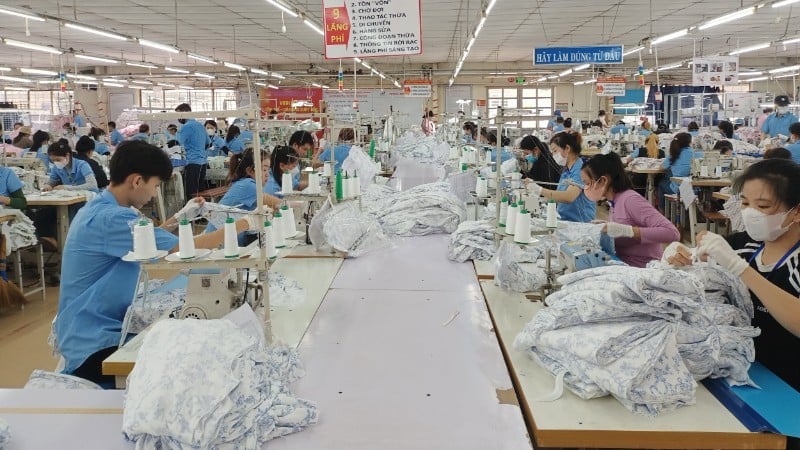
Textile production at Hoa Tho Garment Factory ( Quang Ngai )
Under the impact of the new US tax policy, businesses have proactively discussed market developments and proposed response solutions.
Vietnam is among the countries with tax rates that are not advantageous compared to many direct competitors in the US market; therefore, businesses need to develop solutions to ensure jobs and income for workers, while boosting exports when there are signs of improvement.
Flexible to all changes
Chairman of the Board of Directors of the Vietnam National Textile and Garment Group (Vinatex) Le Tien Truong said that as soon as the White House announced the decree adjusting the reciprocal tax, businesses in the system discussed with US customers to grasp market developments and assess the impact on production and business activities. Goods that were loaded on ships and were on their final journey to the US before 0:01 on August 7 and cleared customs before 0:01 on October 5 (US time) will still enjoy the old tax rate; transit goods will be subject to an additional tax of 40% along with some regulations that have not been announced in detail. Given the above developments, units need to adjust production appropriately to maintain jobs, ensure income for workers as well as proactively manage finances and be flexible in prices to retain orders and customers. At the same time, businesses need to research, expand and develop new markets to boost production and export of goods in the context of increasingly fierce competition.
“Not only is competition very high, but the last months of the year will be a time of market volatility. Therefore, units need to stabilize their workforce as well as review and upgrade equipment to meet committed orders. In addition, the entire system must commit to productivity and product quality because these are key factors in retaining customers and being ready when the market recovers. With the developments tariff and the market will continue to change every day, units need to proactively update information regularly, analyze carefully to have timely and effective solutions", Mr. Le Tien Truong emphasized.
According to Chief of Office of Vinatex Board of Directors Hoang Manh Cam, the reciprocal tax rate announced by the United States on the morning of August 1 shows that no major textile and garment exporting country enjoys a good tax rate, at the base rate of 10%. Therefore, in the coming time, textile and garment demand in the United States will decrease due to price increases. Not only garments but other items are also at risk of price increases due to tax increases, leading to the impact on US consumer spending. The 20% tax rate applied to Vietnam is higher than Türkiye (at 15%), Cambodia and Indonesia (both at 19%), equal to its direct competitor Bangladesh (20%) and lower than India (25%). Particularly in the African region (a region that produces textiles at very low prices), there are a number of countries that enjoy a tax rate of 10-15%, much lower than Vietnam. However, the production capacity and market share of these countries are still limited, so in the short term, it will not have much impact on goods. textile export of Vietnam. However, the risk of shifting some orders from countries with higher taxes is possible. Enterprises must have solutions to cope with all situations as well as diversify product designs, markets, and customers to boost exports.
Dr. Nguyen Huu Cung, lecturer at the School of Interdisciplinary Sciences and Arts (Vietnam National University, Hanoi), said that the United States is currently Vietnam's main export market. However, it is necessary to research and expand new markets to limit the impact of some large markets. Reciprocal taxes create certain pressures but are also opportunities for businesses to improve their adaptability, upgrade the national value chain and transform the sustainable growth model.
Boost production and business
In the context of the world continuing to fluctuate with escalating conflicts, complex tariff policies causing disruptions in supply chains, etc., in order to maintain production activities as well as ensure jobs and income for workers, businesses have flexibly applied many solutions to accelerate exports and soon reach the set goals.
General Director of 8-3 Textile One Member Limited Liability Company Vien Minh Dao said that the production and business results of the unit in the past 7 months reached 6,832 tons of yarn, equal to 51.7%, revenue reached 460 billion VND, equal to 50% of the yearly plan, accumulated profit in 7 months reached 800 million VND, average income reached 13.2 million VND/person/month.
To achieve the above results, the company has drastically improved daily production output such as optimizing output, stabilizing quality, improving raw material quality and maintaining continuous production time. The company also changed the market structure ratio by focusing on producing and consuming effective products, analyzing costs, selling prices, determining profits and losses of each product, etc.
“To complete the annual target, ensure stable employment and average income for workers, 8-3 Textile will continue to improve production organization capacity, expand markets and customers. The unit focuses on applying human resources and technology to inspect and review the production line at all stages to stabilize the quality of specific products. In addition, we aim to invest in automation and in-depth investment such as improving the Magazin winding machine, investing in additional cotton tearing and mixing lines synchronized with dust filtering equipment, etc. to improve product quality and increase the competitiveness of goods”, General Director Vien Minh Dao affirmed.
Deputy Director of Hoa Tho Garment Factory (Quang Ngai) Nguyen Thi Mong Hoai added that in recent years, the unit has faced many difficulties after the Covid-19 pandemic, market fluctuations have caused a sharp decrease in the number of customers, and efficiency has not met requirements. Many solutions to promote production and business have been applied, helping the unit's revenue in the past 7 months reach 85 billion VND, reaching 59% of the yearly plan, with an average income of 9.8 million VND/person/month, with existing orders until October, and some customers have placed orders until March 2026. However, the increasingly fierce pressure on labor competition, market fluctuations, especially changes in tariff policies, have caused the factory to continue to face many difficulties. In the coming time, to achieve the annual export target of 145 billion VND, the unit will continue to invest in modern machinery and equipment, reduce costs as well as expand and seek new markets.
Source: https://baolangson.vn/nganh-det-may-ung-pho-truoc-bat-loi-ve-thue-5056038.html



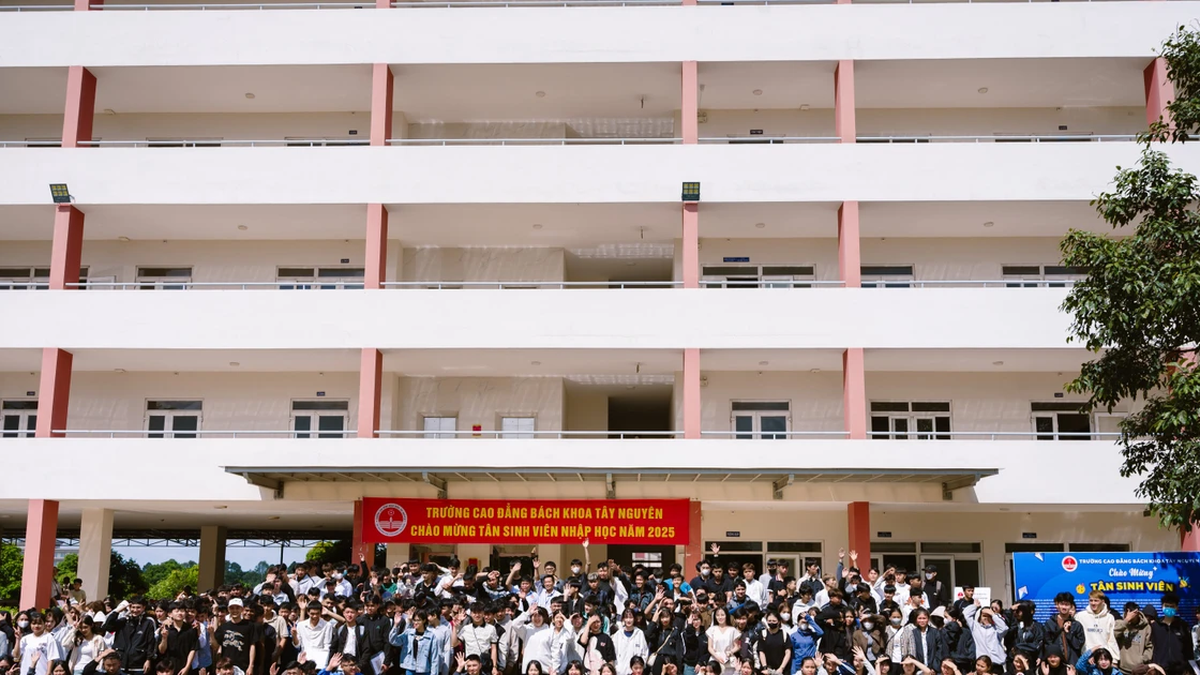





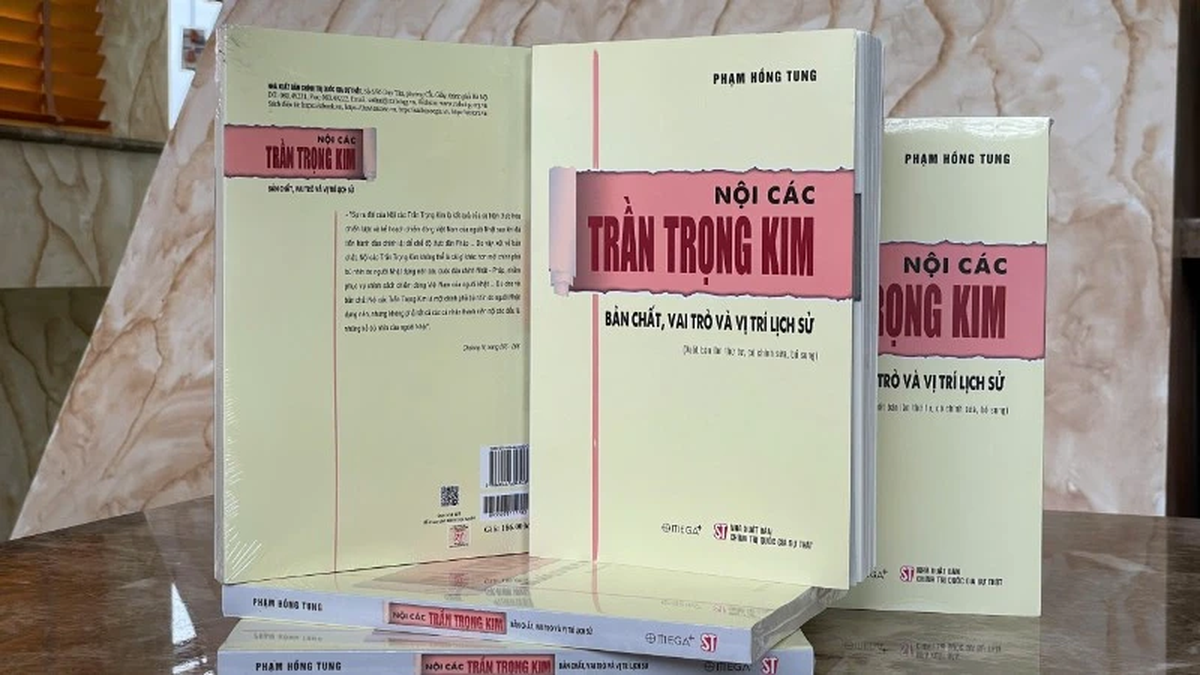

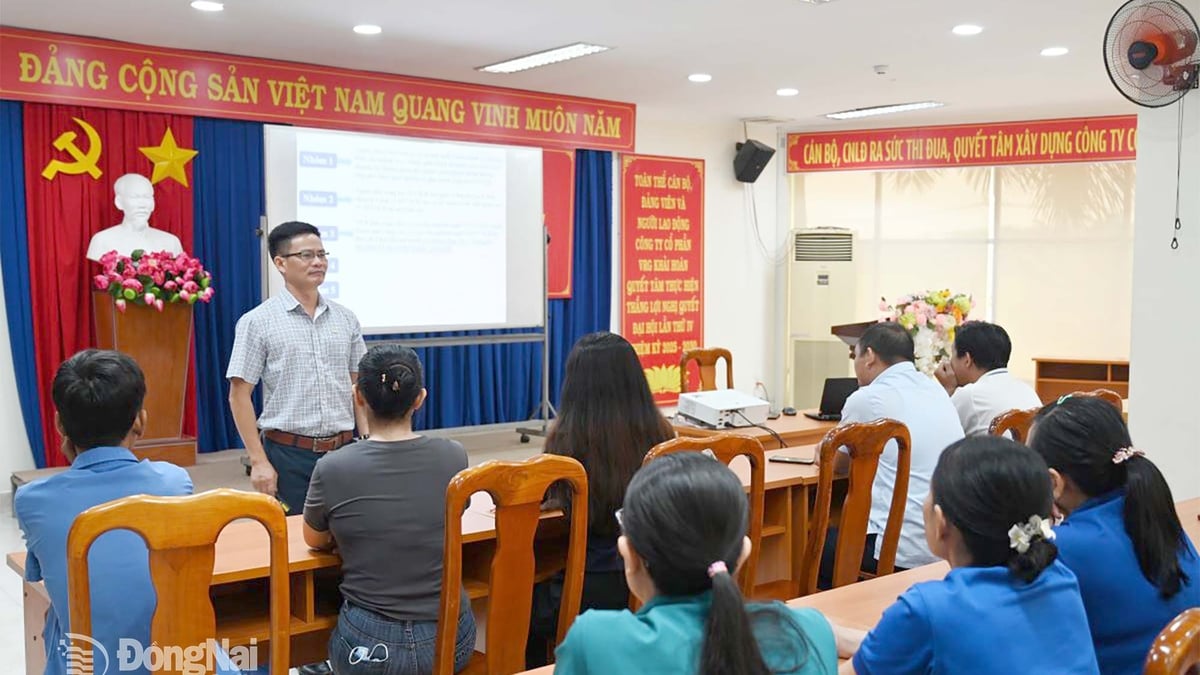











![[Photo] National Assembly Chairman Tran Thanh Man attends the inauguration ceremony of President Ton Duc Thang Memorial House](https://vphoto.vietnam.vn/thumb/1200x675/vietnam/resource/IMAGE/2025/8/16/23555950872d428a8708a1e2f94cbf59)
![[Photo] Red and yellow stars at the launching ceremony of the program "Moving Forward with Vietnam"](https://vphoto.vietnam.vn/thumb/1200x675/vietnam/resource/IMAGE/2025/8/16/076df6ed0eb345cfa3d1cd1d7591a66f)

![[Photo] General Secretary attends the inauguration ceremony of the Ministry of Public Security Headquarters](https://vphoto.vietnam.vn/thumb/1200x675/vietnam/resource/IMAGE/2025/8/16/3ceec3a24ef945c18ae2b523563b749d)
![[Photo] Prime Minister Pham Minh Chinh talks on the phone with Cambodian Prime Minister Hun Manet](https://vphoto.vietnam.vn/thumb/1200x675/vietnam/resource/IMAGE/2025/8/15/72d3838db8154bafabdadc0a5165677f)
![[Photo] “Moving forward with Vietnam” on the most romantic road in Vietnam](https://vphoto.vietnam.vn/thumb/1200x675/vietnam/resource/IMAGE/2025/8/16/0ee500bc59fd4468863261ee26f47fe7)
![[Photo] Prime Minister Pham Minh Chinh attends a special art program called "Hanoi - From the historic autumn of 1945"](https://vphoto.vietnam.vn/thumb/1200x675/vietnam/resource/IMAGE/2025/8/15/c1c42655275c40d1be461fee0fd132f3)

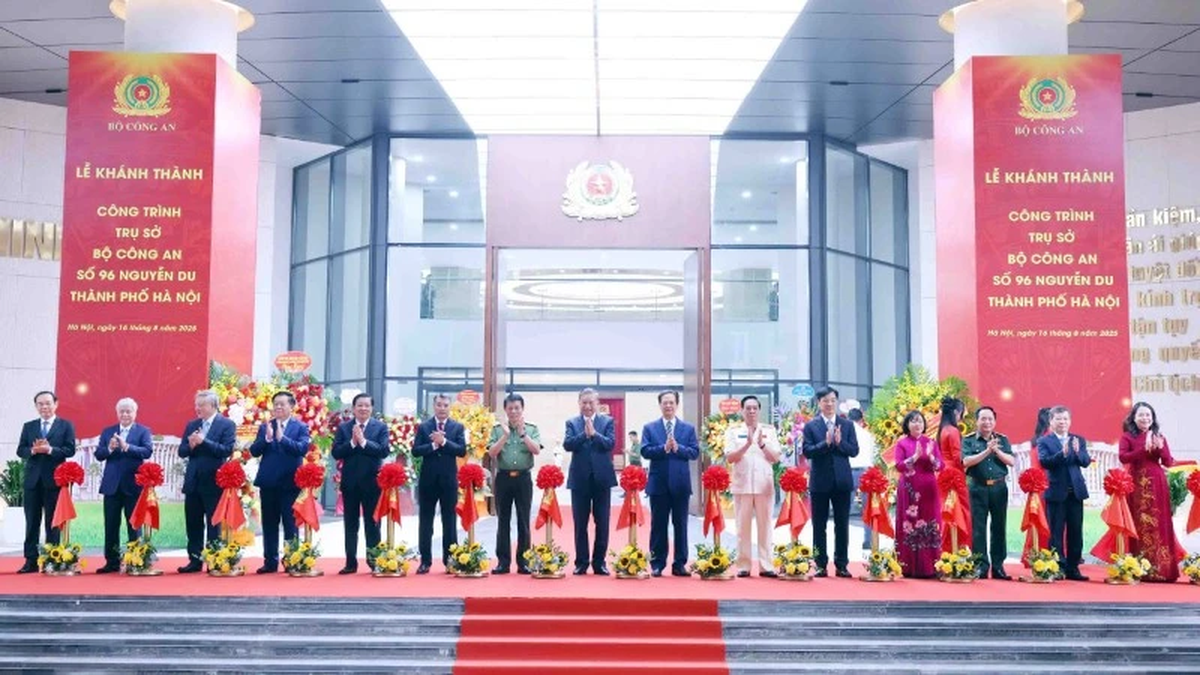








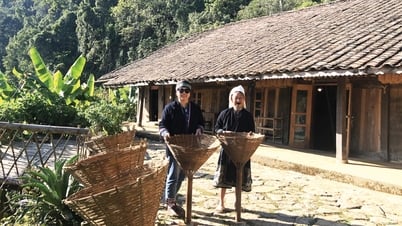






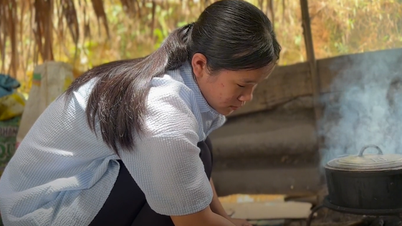


















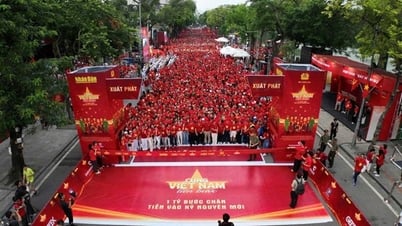



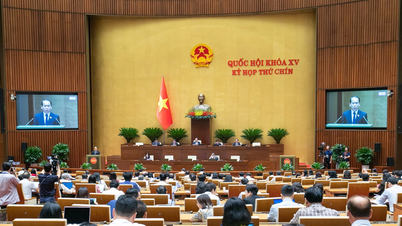
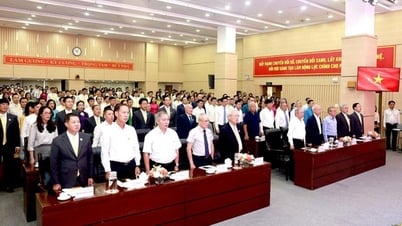




























Comment (0)